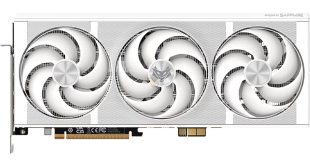Over time, companies gain and lose people. In the natural sequence of events, when someone leaves, they are often replaced immediately by someone else with similar experience/salary demands. Right now, that's not the case at AMD. KitGuru looks at the latest changes and believes it has found a pattern.
If you're at all into football, you will notice that every time a top player becomes available, they are immediately linked with a huge wage demand and a possible transfer to Chelsea, Manchester United or Manchester City. The player's agent gets paid depending on the deal they negotiate, so it is in their interest to get the biggest chunk of change possible. The same was true for Spanish teams like Real Madrid and Barcelona – as well as Italian giants like AC Milan and Inter Milan.
When the football market was booming, this approach worked. But now we're approaching a period in the history of the game where rules will be put in place that say ‘You MUST run your club like a business'. Why? Because the excessive wage demands just don't make sense any more. In Italy, Inter Milan has debts of around $1.4 Billion. If it was not 100% backed by an oil company, it would have folded long ago.
But does the same logic hold true for other markets? What about technology?
With the news that Thomas Seifert, AMD's Chief Financial Officer, deciding to walk away from the company in search of a new challenge (widely rumoured to be with Siemens), the chip giant's wage bill is again reduced. The on-going wave of resignations and ‘moving on' of people throughout the company since John Byrne took over as Chief Sales Officer, is a sign that the company is preparing for a new kind of future.
We've recently noticed a lot of online debates about how organisations can fund a $5 Billion fabrication plant to produce processors that will sell for only $10 each. Even if you make 50% on each chip sold, that still means selling one billion processors to get the price of the FAB back. That clearly can't work. Re-tooling existing plants will help, but – in the long term – companies like Intel will need to radically change their business model. KitGuru has previously stated that this will be in the ~10 year time frame and we're confident that's right.
So that brings us back to AMD.
We have done some basic calculations and listened to a number of gurus on the subject. Putting technical innovation to one side, AMD can begin to turn around as a company if it can (a) make more of the products that people actually want to buy and (b) reduce it staff operating expenses by around 1%.
Even a modest shift in production – coupled with a modest drop in salary bill – will combine to increase profitability and give the company some breathing space while it decides on what it wants to be in 5 years time.
Any company paying around $1 billion in salaries etc over the course of a year, would pick up $10 million extra dollars for marketing etc with a 1% drop. That's a lot of ‘demand generation' and ‘product development' cash.

KitGuru says: Moving the cold/hard data to one side, there is a human cost underneath all of this. Can AMD encourage the right people to leave – without leaving itself exposed in key areas? Can engineers be re-targeted to produce volume products with crucial feature sets only – rather than all singing all dancing processors that may or may not have a market.
Comment below or in the KitGuru forums.
 KitGuru KitGuru.net – Tech News | Hardware News | Hardware Reviews | IOS | Mobile | Gaming | Graphics Cards
KitGuru KitGuru.net – Tech News | Hardware News | Hardware Reviews | IOS | Mobile | Gaming | Graphics Cards


